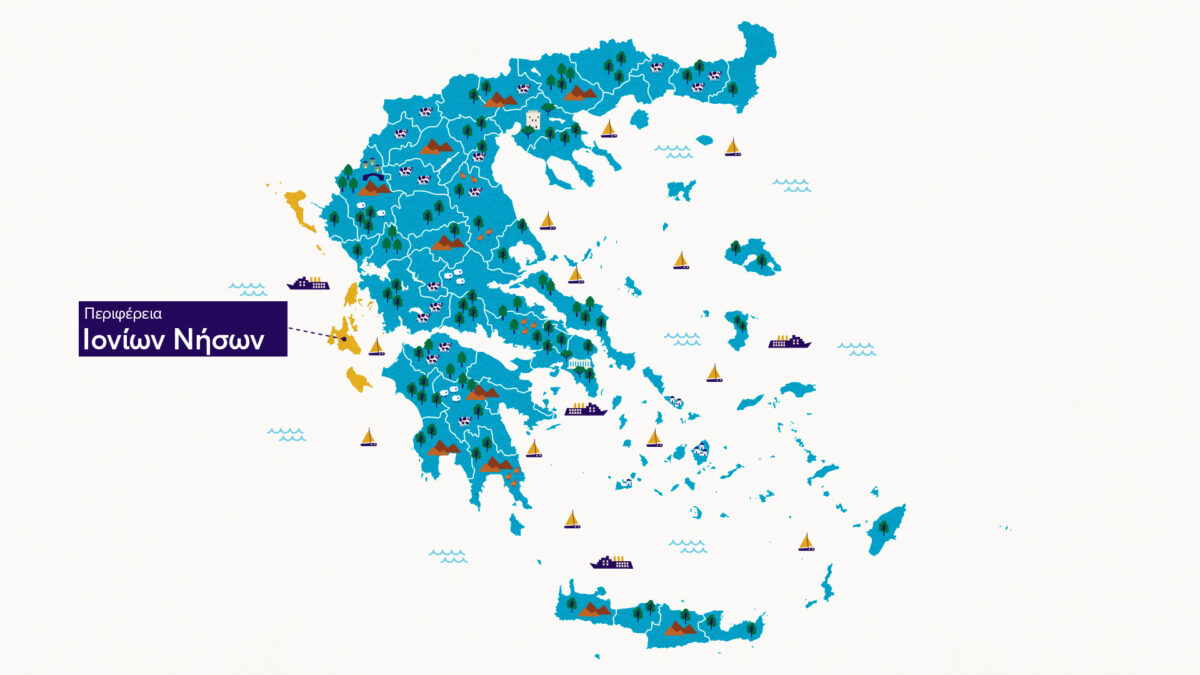Geographically, the Region of the Ionian Islands is found in the westernmost extremity of Greece, encompassing most of the Heptanese (seven islands) archipelago in the Ionian Sea. This administrative region encompasses six of the seven famous Ionian Islands, including Zakynthos, Ithaki, Corfu, Kefalonia, Lefkada and Paxoi; the seventh island, Kythira, belongs to the Administrative Region of Central Greece. The islands are all served by ferry routes from the ports of Astakos, Igoumenitsa, Kyllini and Patras, while Corfu, Kefalonia and Zakynthos have international airports. Of the islands, only Lefkada is accessible by car.
Each Ionian Island is steeped in rich history, bearing prominent influences from the nearly four centuries, from the mid-14th to the mid-18th century, during which they were controlled by Venice.
The vibrant local identity, which is deeply rooted in the islands’ history, music and traditions, is worth noting. The Venetian influence is prominent in both the local architecture and the islands’ culture, music, mores and customs, not to mention in the local dialect, with its loan-words from Italian and its characteristic timbre.
Also important are the Ionian musical traditions, such as the cantada, while Corfu is also known for its classical music as well as its status as a source of inspiration for composers such as Mozart and Verdi.
Today, the Ionian islands are a prime destination for tourists. In addition to attracting visitors interested in enjoying sea tourism, the islands are also exceedingly popular for walking/hiking tourism, boasting footpaths that wander through picturesque villages, scenic mountains and waterfalls, providing a one-of-a-kind opportunity for exploration and immersion in nature.
Visitors are sure to be enchanted by the breadth of local experiences available, such as strolls through the traditional neighbourhoods of the city of Corfu, the impressive Melisani cave lagoon in Kefalonia, the Greek fjord at the harbour of Gaios on Paxoi, the beaches of Ithaki and Lefkada, Shipwreck beach on Zakynthos and the port of Lefkada with its cosmopolitan atmosphere.
The islands’ culinary tradition goes back centuries, fusing Greek and Italian influences to form part of the unique local identity. Visitors can partake of the delicious local cheeses, such as Prentza, a soft cheese made on Zakynthos from goat and sheep’s milk, cured meats such as the renowned Lefkada salami, exceptional olive oil, honey and Zakynthian raisins, not to mention a wide variety of locally made wines. Oenophiles especially should not miss the opportunity to sample some of the famous Robola, a PDO wine from Kefalonia.
The Ionian Islands boast a remarkably varied cuisine which combines land-based produce with the fruits of the sea, displaying influences from history and the local tradition. Each island has its own culinary experiences and recipes to share: visitors to Kefalonia should try the local meats and pies such as bakaliaropita, tsouknidopita and kreatopita, while the prominent Italian influences on Corfu’s cuisine shine through in such famous dishes as bianco (fish), bourdeto (fish stew), savoro, sofrito and pastitsada (meat in red sauce served over a thick pasta). Lefkada is known for its frygadeli (spit-roasted liver) and tsigaridia (sautéed greens), while Zakynthos has its boutridia (a vegetarian dish consisting of various oven-roasted vegetables). The local cuisines of Paxoi and Ithaca are based on fresh seafood and traditional recipes, with local sweets such as the Rovani (a syrupy confection with rice, honey and oil) and sykopita from Ithaki making their appearance at the table as well.
Overall, visitors to the Ionian Islands are in for a one-of-a-kind experience, steeped in history, picturesque scenery, exceptional cuisine and a broad range of activities which, together with the islanders’ renowned hospitality and friendliness, are sure to make for an unforgettable holiday.










